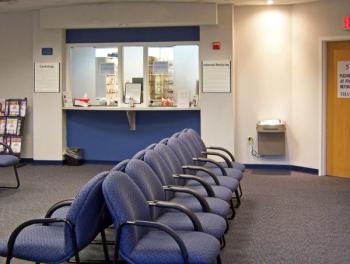
7 must-haves for your healthcare website
Just because your medical practice has a website doesn’t mean you’re effectively reaching your audience
In today’s world, meeting patients where they are involves marketing to them and communicating with them online. That’s especially true in healthcare, where patients have more options than ever due to more expansive health insurance coverage and a vast array of providers to choose from through the Internet.
In fact, most patients
But just because your medical practice has a website doesn’t mean you’re effectively reaching your audience. Consider this: When a potential patient searches on Google, there are often millions of results, even for terms like “cardiologist” or “primary care physician.” How can you set your practice apart from the rest?
Your website is your secret weapon - and you need to optimize it for the best possible patient experience. Starting with these seven essentials below can make a big impact without requiring significant time or financial investments.
1. Security. As the internet has become a part of our everyday lives over the last few decades, most of us have been taught to make sure that the websites we’re visiting are secure.
We want to know that the information we’re providing is private and safe. That’s true on any website, but it’s crucial on a healthcare website. It’s not just because that is what patients want, but also because your website, just like your patient records, is
You’ll want to ensure you have an SSL certificate and HIPAA-compliant online contact forms, while also partnering with a website hosting provider that’s HIPAA-compliant and has PHI-protecting protocols in place.
Take the first step in this direction by beginning a conversation with your website designer or hosting provider about website security and HIPAA compliance.
2. Mobile-friendliness. Did you know that, according to Google, four in five patient encounters start with a web search on a mobile phone? Both patients and search engines prefer mobile-friendly websites with responsive design.
A mobile-friendly website isn’t just recommended - it’s essential. Make sure that your
3. Easily accessible contact details. Key information, most importantly your contact information, should be easy to spot.
This can be as basic as ensuring your phone number is noticeable and clickable on your homepage, or as complex as giving users a simple way to register for a program or schedule an appointment. Regardless of which options you choose, make sure the path from start to finish is easy for patients to navigate.
4. Clearly listed locations. If someone makes an appointment with your facility or is even considering doing so, they’re going to want to know where to find you.
The locations page is typically among the most viewed pages on any healthcare website. So finding the locations page and parsing through the information on that page should be seamless and easy for your audience to do.
Place the locations information in an obvious place on your website, and ensure the information is easily readable and understandable. It should include key details about the locations, including what services are offered there and directions to get there.
5. Provider information. When we have concerns about our health, there’s a good bit of fear and worry involved. Because of that, an important and sometimes underappreciated part of health care is creating a level of trust between providers and patients.
You can begin cultivating that trust through your website. Use the pages of your site to establish confidence in the care you provide and help your audience see your providers as the experts in their field. Make sure that your providers’ credentials are clearly visible, but don’t forget that patients want to develop a comfortable and trusting relationship with their provider too.
Expertise matters, so highlight education, fellowships, board certifications and more, but don’t forget that many other providers have those credentials too.
6. Insurance details. Insurance coverage is often the driving force behind the healthcare decisions we make. Because of that, many patients visit a healthcare provider website in search of information about whether their insurance plans are accepted.
That information needs to be easy to find on your website - and easy to decipher. Lay it out in a way that’s readable and comprehensive, providing all the details potential and current patients would be looking for.
7. Updated listings. Did you know that
If a patient never finds their way to your website, you have no opportunity to wow her with a positive first impression.
To ensure your audience is finding its way to your site, make sure that you regularly view and update your Google, Bing and Yahoo business listings, as well as any industry-specific listings.
Part of this involves having patients who have had a positive experience review your healthcare practice, as doing so helps build trust with potential patients.
One Step at a Time
Making updates and improvements to your website doesn’t have to happen all at once. If you’re feeling a bit overwhelmed, prioritize a few enhancements per week, and work through them as time allows. Or find a trusted partner who can take some of the heavy lifting off your plate.
Rachael Sauceman is the Head of Strategic Initiatives for
Newsletter
Stay informed and empowered with Medical Economics enewsletter, delivering expert insights, financial strategies, practice management tips and technology trends — tailored for today’s physicians.















